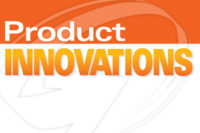2024 NSC Safety Congress & Expo
AI is everywhere: Can it test fatigue levels in workers?

Photo credit: iLexx / iStock / Getty Images Plus
Orlando — Numerous education sessions at this year’s National Safety Congress & Expo are on one aspect or another of artificial intelligence (AI). AI is also the topic of conversations in convention center hallways, the expo floor, and over breakfast, lunch and dinner. The bottom line fear: will it take my job?
One session Monday afternoon focused on how AI can be used to detect fatigued workers. In pilot tests at high-risk operations such as chemical plants, employees volunteer to step into a sound proof enclosure and read sentences from a script. AI can tell how employees read the sentences, their pronunciation and tone of voice, their level of fatigue, from none to minimal to severe.
The inventor of this AI safety practice does not want it used to punish employees if they show the verbal signs of fatigue. The recommendation is a fatigued employee should meet with his or her supervisor to discuss what intervention can ease the fatigue. It might be drinking coffee, taking a 20 minute nap, drinking fluids or eating a protein sports bar. Employees who consistently display high levels of fatigue are recommended to seek medical assistance. Perhaps they have sleep apnea. Or sleeplessness is caused by medications. Or lifestyle changes may be in order.
In the pilot tests, most employees who volunteered to be analyzed wanted to continue the daily testing. They want to know, like wearing an Apple watch, their various health metrics, including how much sleep they get.
This AI company also can detect fatigue by photographing an employee’s face. Facial biomarkers around the eyes, mouth, chin, jaw and eyebrows will display different patterns indicating different levels of fatigue. The profiling of faces, as with the voice recognition, is conducted anonymously. Employees are only known by numbers, not their names.
In pilot tests, employees were much less interested in being on camera for facial profiling, anonymity or not. The number of volunteers dropped significantly. Why? Employees don’t like the idea of being monitored or profiled visually. They don’t trust how a company will use the images.
This has ramifications for other types of AI camera monitoring. Truckers and other employees who drive for a living can be monitored by camera all day long. They can be monitored by AI cameras on an assembly line, work station, in a warehouse, working around robots and other applications. Safety pros can expect pushback from employees demanding their privacy and resisting “big brother” tracking and recording their movements.
Audio and video AI profiling can also be used to detect substance abuse, with patterns of speech and facial biomarkers indicating alcohol consumption, marijuana or cocaine use, and other substance abuses. The AI company chose to focus on fatigue management and not substance abuse management in pilot tests due to the potential actions needed if substance abuse is revealed. It is a more complicated issue to confront, with legal ramifications.
The AI company says its tests for fatigue or substance abuse are 95% accurate.
As the speaker, a physician, said at the end of the session, imagine what AI will be capable of doing in the next 5 to 10 years. Prices for AI products will drop, as with computers over the years, technology will continually advance, and many more companies, especially high-risk operations, will use AI for any number of safety and health applications. It’s inevitable, he said.
Looking for a reprint of this article?
From high-res PDFs to custom plaques, order your copy today!








